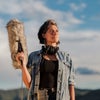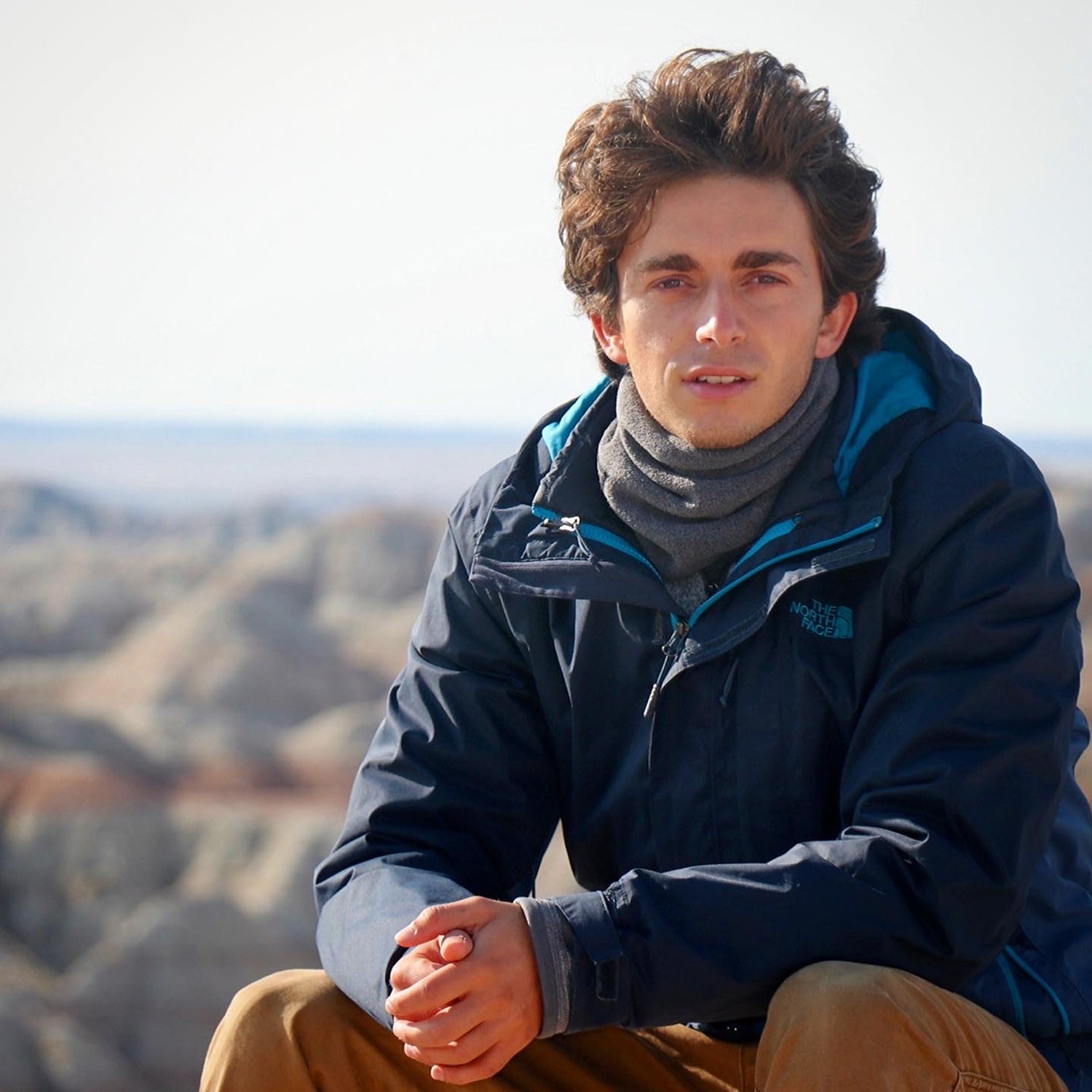Jordan Salama shared his story with producer Cat Jaffee for an episode of The Daily Rally podcast. It was edited for length and clarity.
I will never forget sitting in a cigar box room so hot in a town called Estación Cocorná on a bed that had no sheets. It was a bare mattress with this horribly loud, rusty fan blaring in the corner. Laying on my back, staring at the ceiling, hearing everything going on outside and thinking, I am not going to be able to finish this trip down this river. I can’t do it.
All I knew was that I was tasked with spending four weeks traveling down this river and finding the best stories that I could collect along the way. And I thought at that moment that I’d failed.
I’m a writer. I’m really interested in stories that connect people that cross cultures and borders and also foster a sense of greater respect between people in the natural world.
In a country as biodiverse as Colombia, which is the second most biodiverse country in the world, everybody everywhere I went was saying, “You have to travel the Magdalena River if you want to understand Colombia.” This is a river that is just filled with stories, literally everywhere you turn. Gabriel García Márquez, the famous Colombian novelist, even used the Magdalena as a character in some of his books.
I was traveling down the Magdalena River, from source to sea, from the Andes to the Caribbean, about a thousand miles, and trying to live with people who I met. I was concerned about the security situation because I’d heard a lot about what was going on in Colombia. This was in 2018. A peace deal had just been signed two years earlier. I wasn’t quite sure if what I was doing was even safe, let alone sane.
I wanted to be sure, very entirely sure, that somebody would be receiving me. Everywhere I went in every single town, every single place where I got off a bus or got off a boat, somebody would be there to meet me. I would meet somebody who was a friend of a friend of a friend in some way, some kind of distant connection, whether it’s the grandmother of somebody who I used to learn how to play the piano from when I was five years old in New York or the cousin and an uncle of a classmate of mine in college who happened to live along the river. Basically, any connection that I could find in this place that was foreign to me, I used. Because it was an entry point into these communities.
In this moment of panic, I ran out of people who I thought would be the right kind of companions, quote unquote, for a journey like this. And I realized that from that point on, I would be going at it pretty much on my own.
I was young and inexperienced and I didn’t know exactly what I was doing. I felt a lot of pressure because this was something that I would end up getting a grade on in school, and so that wasn’t lost on me either. At the end of the day, I was writing a paper for an assignment that would determine how I did in college. That made me feel also stressed and scared and a little bit frustrated. And I wanted to give up.
I thought to myself, I should stop now. I should turn around, I should go home. Then something changed.
I’m laying down on this bed with my clothes off because I’m completely suffocated by the oppressive 100 degree heat and humidity. It’s 3P.M or 4P.M.. And then suddenly I’m like, Okay, you know what? I have to give this all I’ve got. Laying in this bed is not going to solve any of my problems. Let me go outside and see what happens in the street. And it just so happens that the family of the people who I was staying with that afternoon were building kites.
It was just this really beautiful, random, commotion that was happening in the streets not far from where I was. I just turned the corner, and there was this group of kids, young and old, and adults with tissue paper and reeds from the river, little wooden sticks, plastic bags, and water bottles, basically whatever they could find and use to build kites because it was August. August in Colombia is the month of the kites. It’s kite flying season, because a breeze washes over the entire country. Literally everywhere you go, there are people flying kites.
They’re like, “Oh, Jordan, you want to fly kites with us?” And as I said, of course. I got on a motorcycle and with a bunch of kids that were trailing behind, and we rode up to this very small hill outside of town. We got off the motorcycles, and hopped a barbed wire fence that was meant for cattle. We stood on this grassy mound. I could see parts of the river very far off into the distance. The sun was setting and the light was getting low over the valley. Suddenly, these creations that were made from trash and cheap plastic material that would soon be waste, little reeds and stalks of grass from the river, flown with fishing line, erupted into the sky. You see these glimmering triangles of color dancing in this really deep blue sky. It is an image that I will never, ever, ever get out of my mind.
It took a moment of just stepping outside, turning the corner, and saying yes to doing something fun with kids. That is the most indelible memory from this journey along the river that I have.
I think that one of the things that it taught me was that in order to write about everyday life, you need to engage in everyday life. You need to participate in everyday life in order to write about it in a way that is meaningful, that is accurate, that is fair, that is detailed and rich and beautiful because that’s what everyday life is.
I hate to even use this metaphor, but be like a ripple in the wind, like a kite in the sky, and let yourself be carried by the winds or waters of whatever is happening around you.
Jordan Salama graduated from Princeton in 2019 and is now a staff writer for National Geographic. His first book, Every Day the River Changes, was named a Kirkus Reviews Best Book of 2021, and a top new travel book by The New York Times. Learn more about Jordan at .��
You can follow The Daily Rally���Dz���,��,��, or wherever you like to listen, and nominate someone to be featured on the show .


